31 eerie underground attractions you can visit
What lies beneath
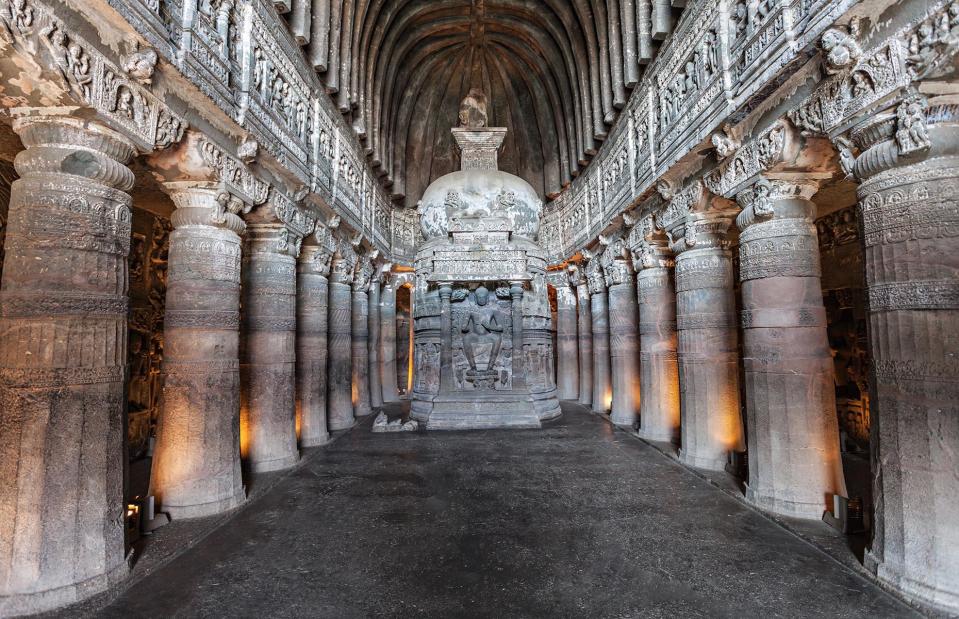
saiko3p/Shutterstock
From cavernous underground cities and age-old subterranean passageways to secret sacred hideouts and wartime bunkers, a whole host of atmospheric abandoned spaces unfold beneath the Earth's surface. But does anyone know these attractions are there?
Read on to see some of the most jaw-dropping abandoned underground sites from around the world...
Old Sacramento Underground, California, USA
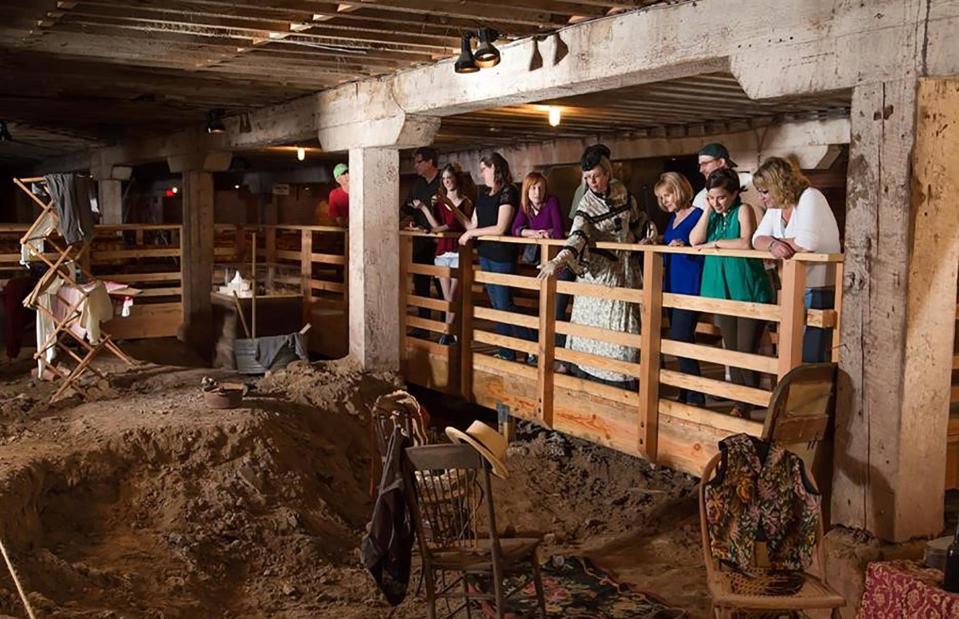
Daynastudios.com
In late 1861, Sacramento was hit by powerful Pacific storms, which caused the rivers to surge through the town, sweeping thousands to their deaths. Instead of deserting their hometown, locals spent years slowly raising the streets and houses by nine feet (2.7m). Today, the Sacramento History Museum offers tours around some of the abandoned basements, alleyways and underground streets.
Aldwych Station, London, UK
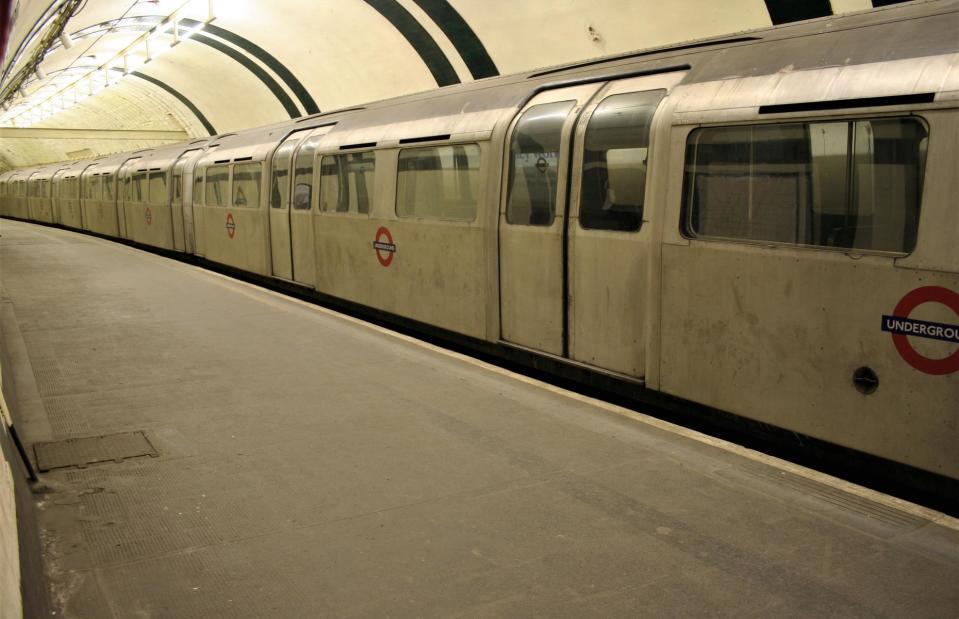
Federico Fermeglia/Shutterstock
The London Transport Museum’s Hidden London tours allow visitors to snoop around the city's disused tube stations. These include Aldwych (pictured), a former stop on the Piccadilly line that opened in 1907 and closed in 1994, and whose ticket hall, original lifts and abandoned platforms and tunnels are still intact.
Derinkuyu, Turkey
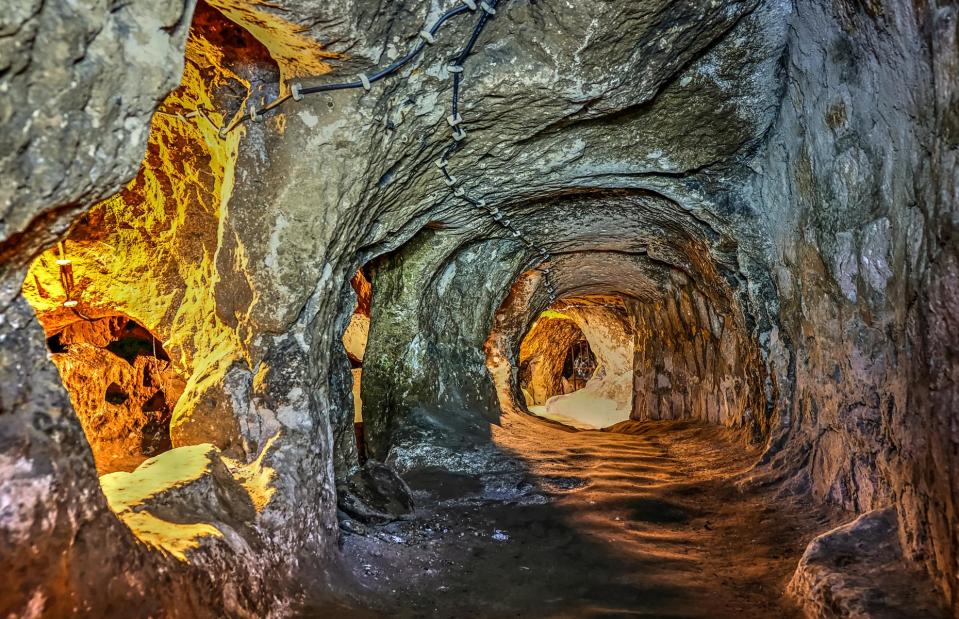
Travel istanbul Turkey/Shutterstock
Turkey's Cappadocia region has many awe-inspiring, ancient underground cities, but rambling and multi-chambered Derinkuyu is the largest. Dating back to the 7th and 8th centuries BC, the sprawling subterranean commune was built to protect its inhabitants from invading forces during sieges. As well as being capable of housing between 20,000 and 50,000 people, the network of man-made caves also housed food stores, stables, churches and wineries. Various companies offer tours of this subterranean world – check with individual operators like Turkish Heritage Travel for availability.
City Market Catacombs, Indianapolis, Indiana, USA
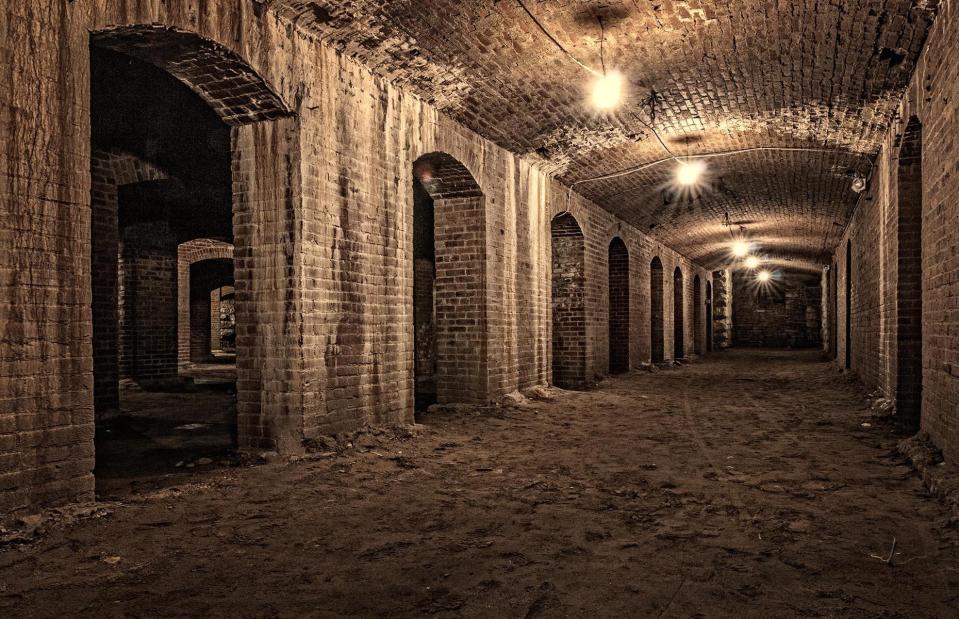
Visit Indy
Beneath the cafes of Indianapolis' City Market, an eerily quiet network of catacombs stretches out for some 22,000 square feet (2,044sqm). The limestone brick arches and pillars were originally the basement of Tomlinson Hall, a vast municipal building that was demolished after a fire in 1958. An organised tour usually offers the chance to explore the musty underground warren which is popular with ghost hunters, but due to construction work surrounding the City Market, tours are unavailable in 2024 and 2025.
Estación de Chamberí, Madrid, Spain
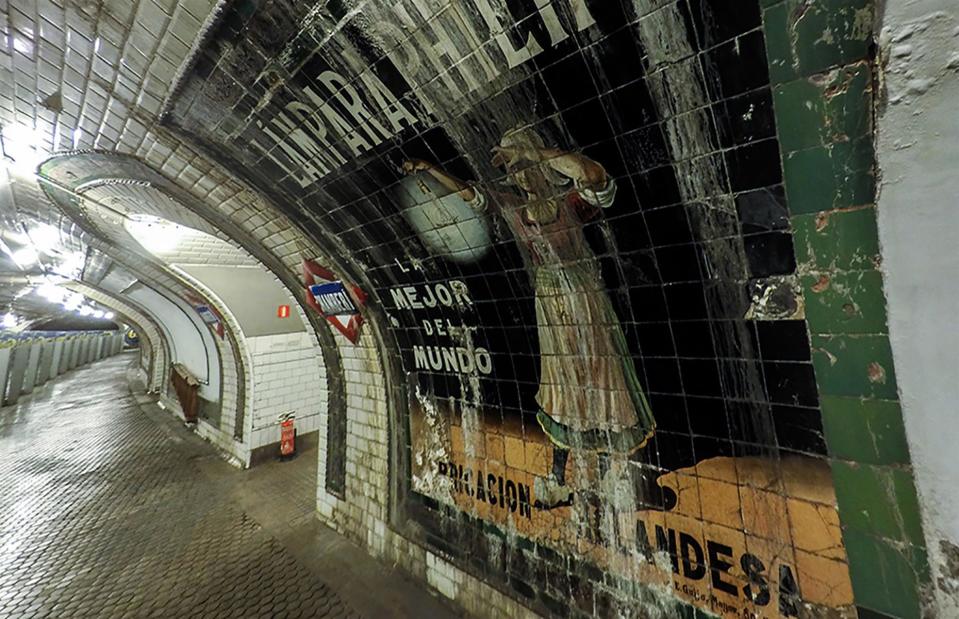
Gonzalo Iza/Flickr/CC BY-NC-ND 2.0
Madrid's Estación de Chamberí opened in 1919 as a stop on the city's first metro line, but it closed in 1966 after it became unusable due to longer trains. After years of being glimpsed fleetingly by commuters, the metro station opened for public tours in 2008 with its old ticket offices, turnstiles and maps in situ. There's a one-in, one-out policy, which allows visitors to absorb the century-old memorabilia and abandoned atmosphere in peace.
Victoria Tunnel, Newcastle upon Tyne, UK
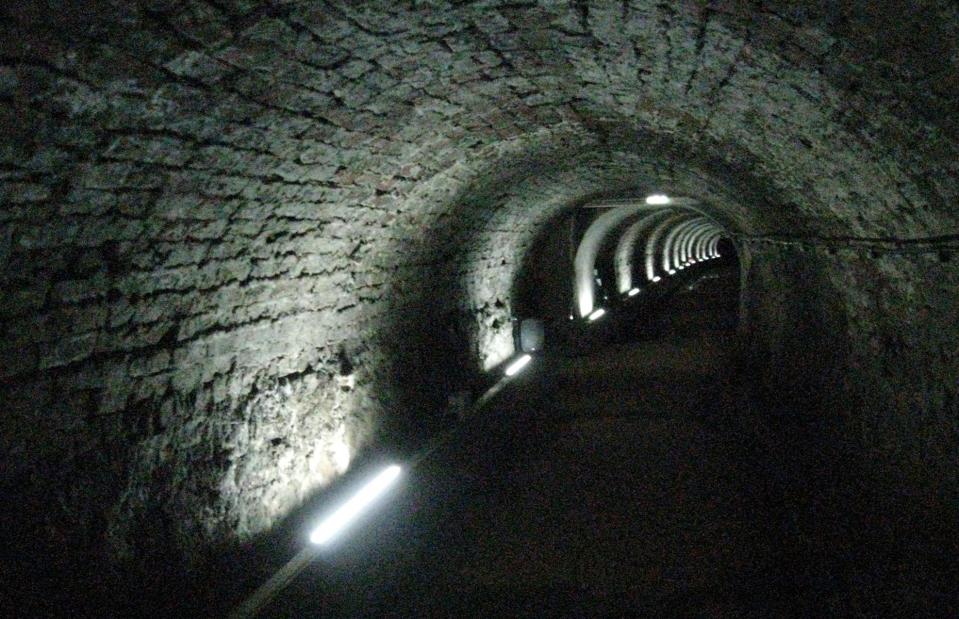
CDC/Wikimedia/CC BY-SA 3.0
An eerie preserved 19th-century wagonway runs under the northern English city of Newcastle to the Tyne River. Originally constructed to transport coal from a colliery to the river, it became an air-raid shelter during the Second World War. After undergoing repairs, the Victoria Tunnel finally opened for guided tours in 2010. Choose between the 75-minute introduction tour and the two-hour tour which includes stories and time for questions.
Crystal Palace Subway, London, UK
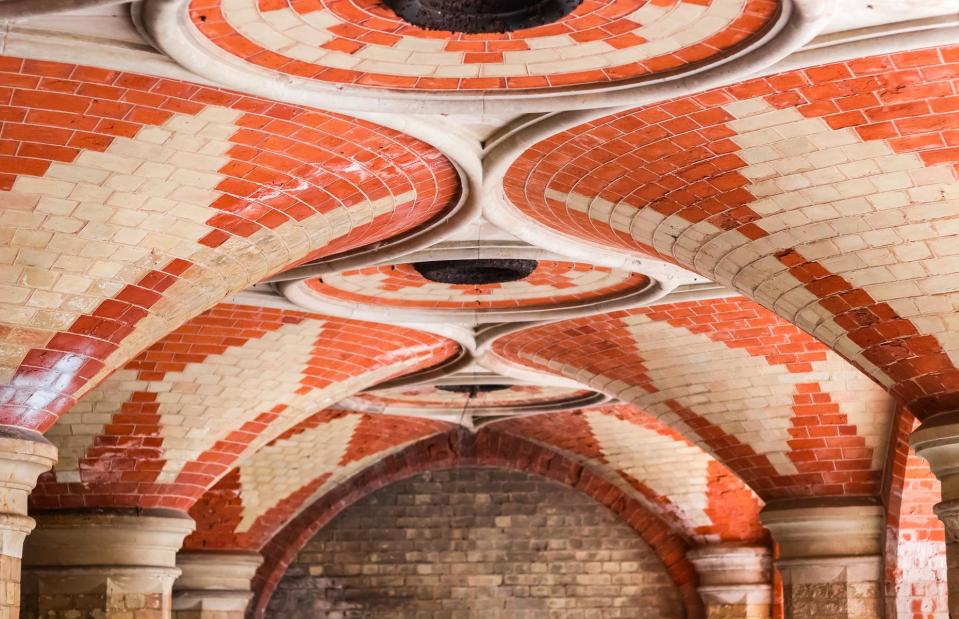
I Wei Huang/Shutterstock
This spectacular space lies hidden underneath a road in south London. The ornately designed Victorian station opened in 1865 to bring passengers to the famed Crystal Palace, which was built to house the Great Exhibition of 1851. It was then used as an air-raid shelter during the Second World War, and eventually closed to passengers in 1954. It would have been left in a state of neglect if not for volunteer group Friends of Crystal Palace Subway, who generally open the space to the public three times a year. Be aware that the subway is currently closed for a large-scale restoration project.
Củ Chi tunnels, Ho Chi Minh City, Vietnam
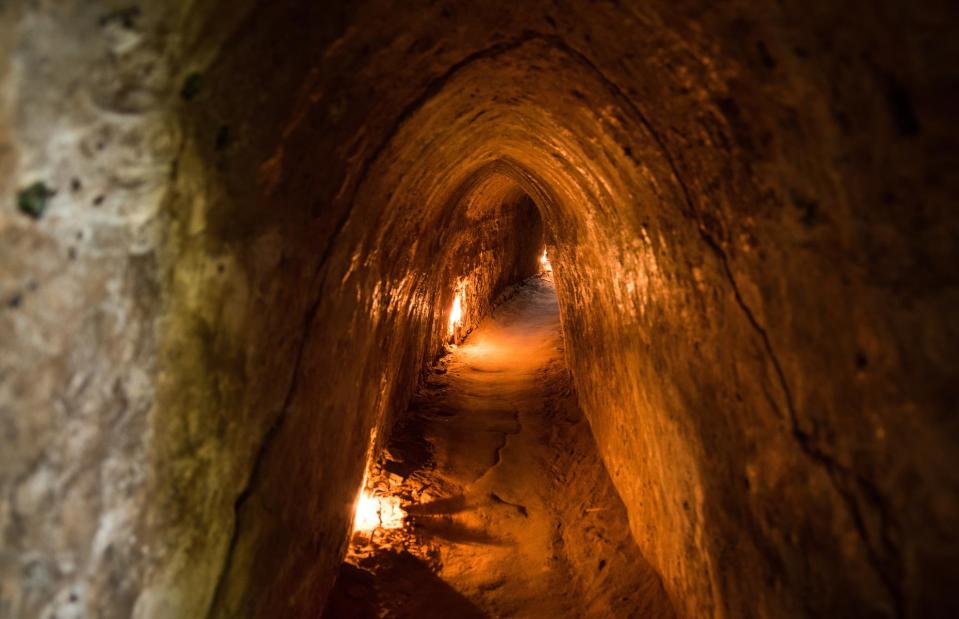
Daphnusia/Shutterstock
The Củ Chi tunnels just outside of Ho Chi Minh City were part of a vast network of cramped and dark tunnels constructed by the Viet Cong underneath the Củ Chi district to hide, launch guerrilla attacks and transport covert communications. Today, it’s possible for tourists to explore some of the tunnels.
Blair Street Underground Vaults, Edinburgh, Scotland
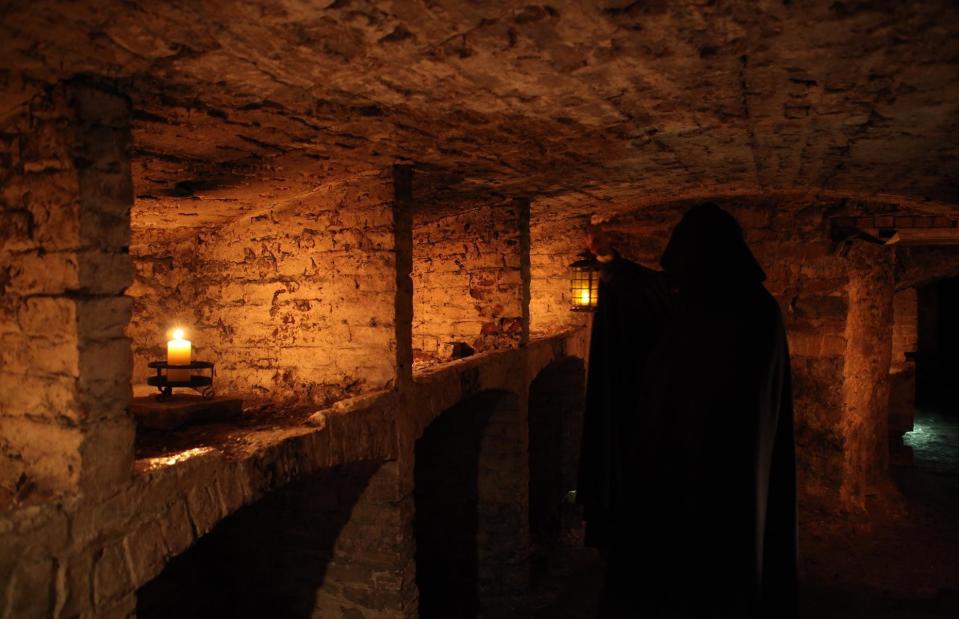
Mercat Tours
Beneath Edinburgh's Old Town lie the spooky subterranean passages of the Blair Street Underground Vaults. The series of chambers were home to taverns, workshops and storage space for merchants in the 18th century, before falling into disrepair and becoming the haunt of the city’s poor and criminal underworld in the 19th century. They were rediscovered in the 1980s and ghost tours explore the creepy underground site.
Fort Worden, Port Townsend, Washington, USA
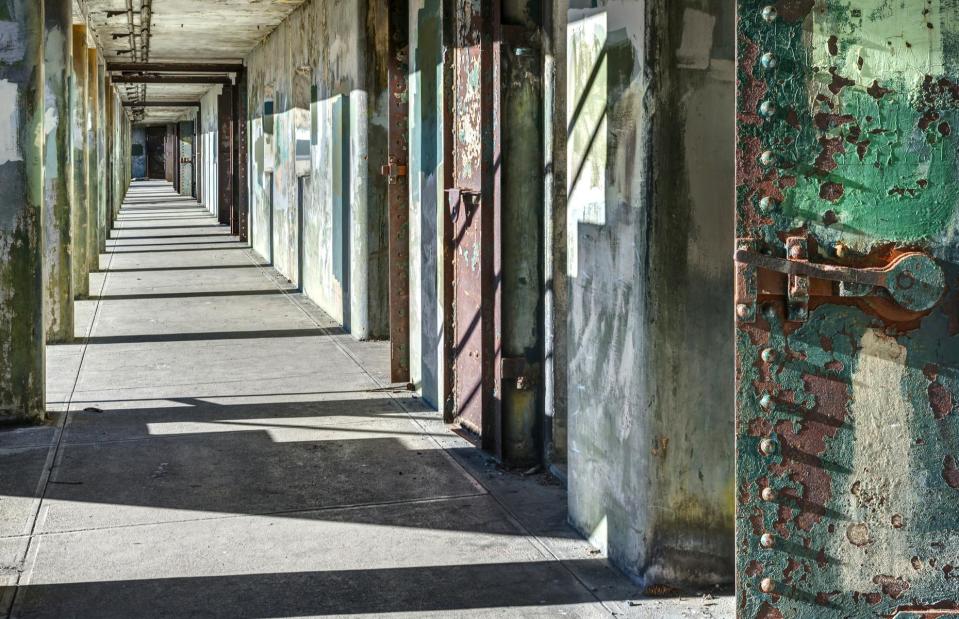
Ryan C Slimak/Shutterstock
Darkened tunnels and eerie passageways make up Fort Worden, a defensive structure built between 1898 and 1917 in Port Townsend. It's the best preserved of three military batteries that once guarded the Washington coast, together known as the Triangle of Fire. Today the deserted remains of the fort form part of the 432-acre Fort Worden Historical State Park.
Couvre Porte, Vittoriosa, Malta
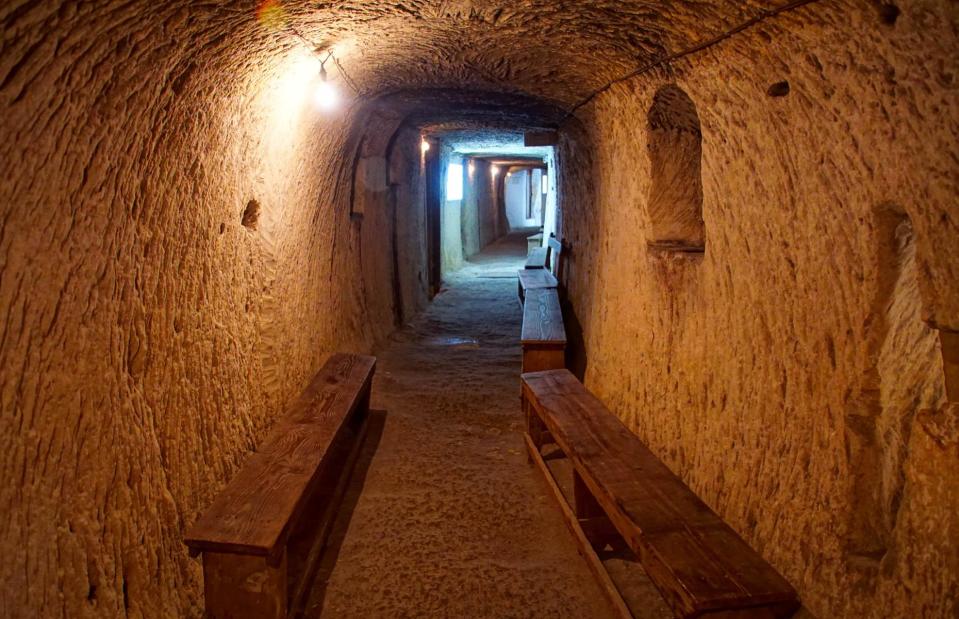
steve estvanik/Shutterstock
As well as being a maze of ancient alleyways above ground, Malta is also rife with subterranean passages. Capital Valletta is a veritable warren of cellars, crypts, tunnels, cisterns and transport tunnels, with some having been constructed by the Knights of Malta as protection against the Turks. Underground wartime complexes can also be found around the island, including one at Couvre Porte in Vittoriosa (pictured) and a hand-hewn chamber under a restaurant in Mgarr, which was used as an air-raid shelter.
Dollis Hill bunker, London, UK
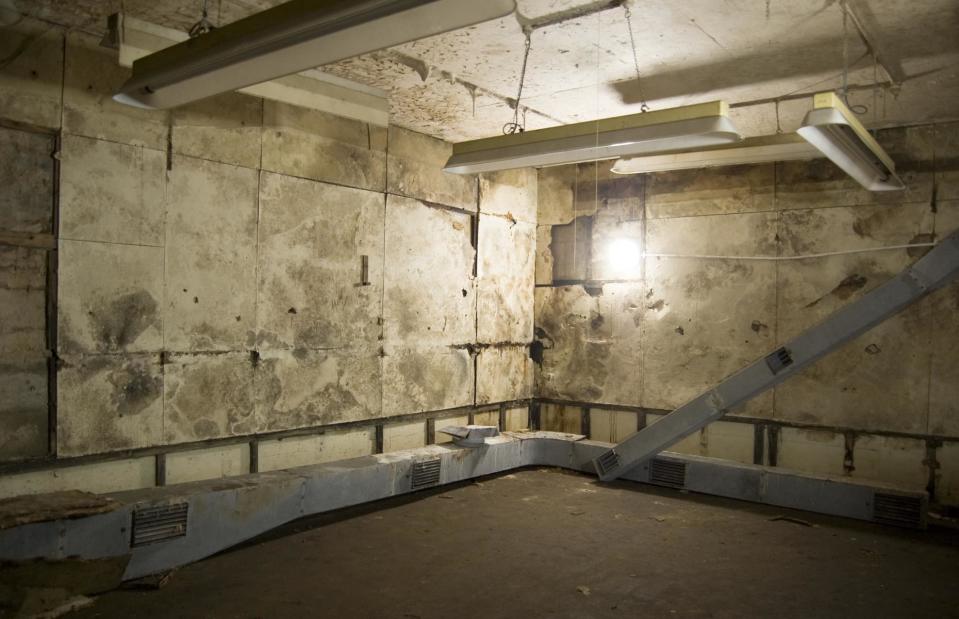
BasPhoto/Shutterstock
You might know about the Churchill War Rooms, the underground HQ hidden beneath the London streets of Westminster where Sir Winston Churchill and his government sheltered during the Blitz. But did you know about the secret wartime bunker that was built in north London's unassuming Dollis Hill? The alternative bunker was also used by Churchill on occasion. It was abandoned in 1944 and original rusting equipment remains.
Orvieto, Italy
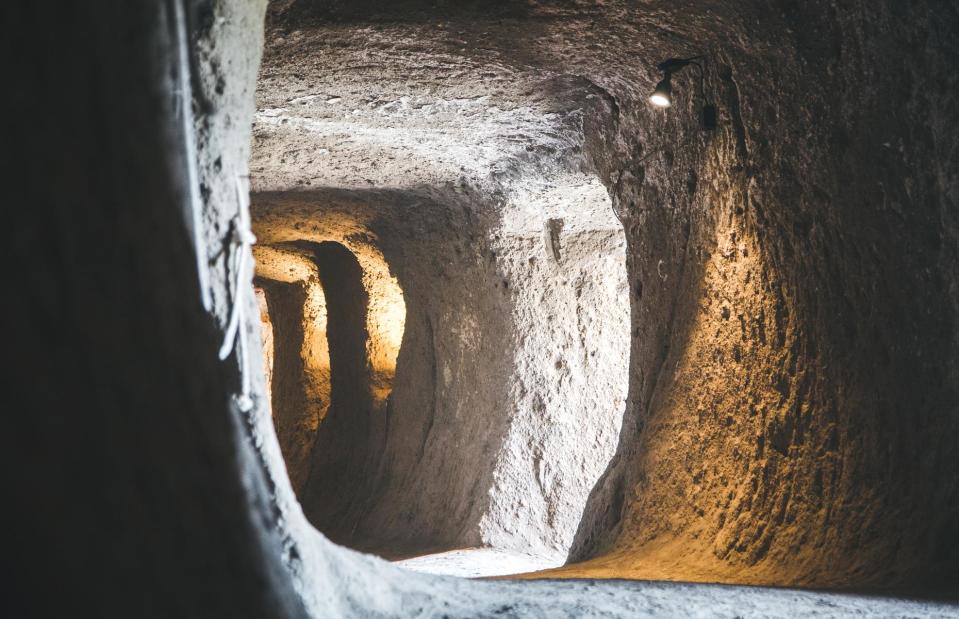
bravikvl/Shutterstock
Quintessential Umbrian hilltop town Orvieto is riddled with underground secrets. The labyrinth of man-made grottos, tunnels, wells and reservoirs lay forgotten for many years but after being unearthed in the 1970s, they can now be visited on tours. One remarkable discovery was a medieval oil press, which was discovered under the Piazza Duomo, complete with millstones, press, furnace and mangers for the animals who worked the grindstones.
Uplistsikhe Cave City, Georgia
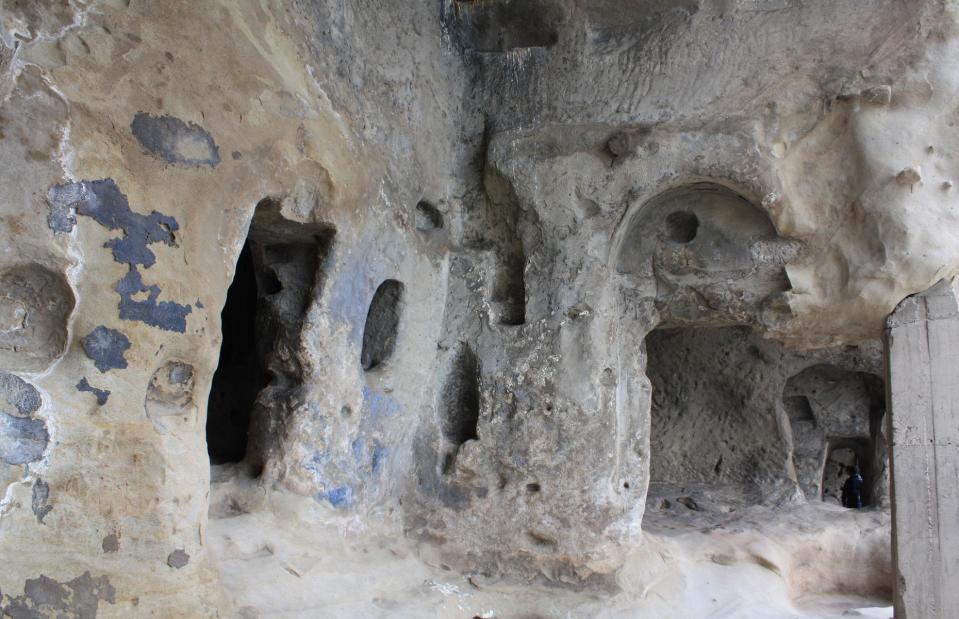
lindasky76/Shutterstock
Stone walkways and stairwells fill the incredible age-old cave city of Uplistsikhe, carved out of the sandstone cliffs of the Mtkvari river. The UNESCO World Heritage Site, near Gori, is thought to date back to 1,000 BC, with its rock-hewn structures connected by tunnels. The once thriving city went into decline in the 12th century and was finally destroyed by the Mongols in 1240. Some of the caves feature ornately carved ceilings and the site is also home to Georgia’s oldest theatre.
Bunkers, Albania
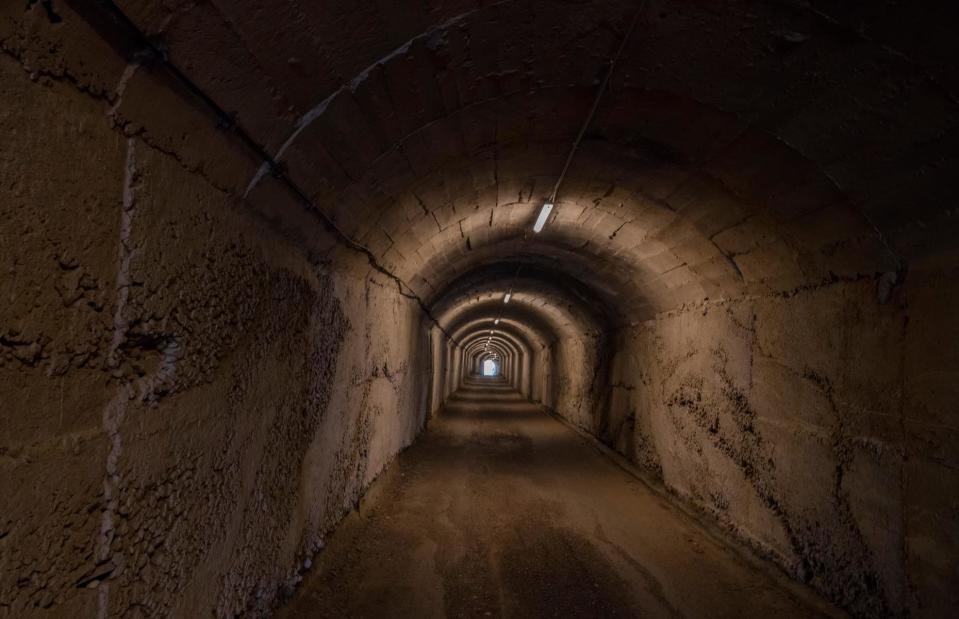
posztos/Shutterstock
Concrete bunkers from the 1960s to the 1980s are a ubiquitous sight in Albania. They were built during the communist government of Enver Hoxha, who saw his country at threat from neighbouring regimes, though the subterranean hideouts were never actually used for defensive purposes. After the fall of the Iron Curtain, the bunkers were left abandoned and many are now derelict, though some have since been turned into museums, animal shelters and even accommodations.
German underground hospital, Channel Islands
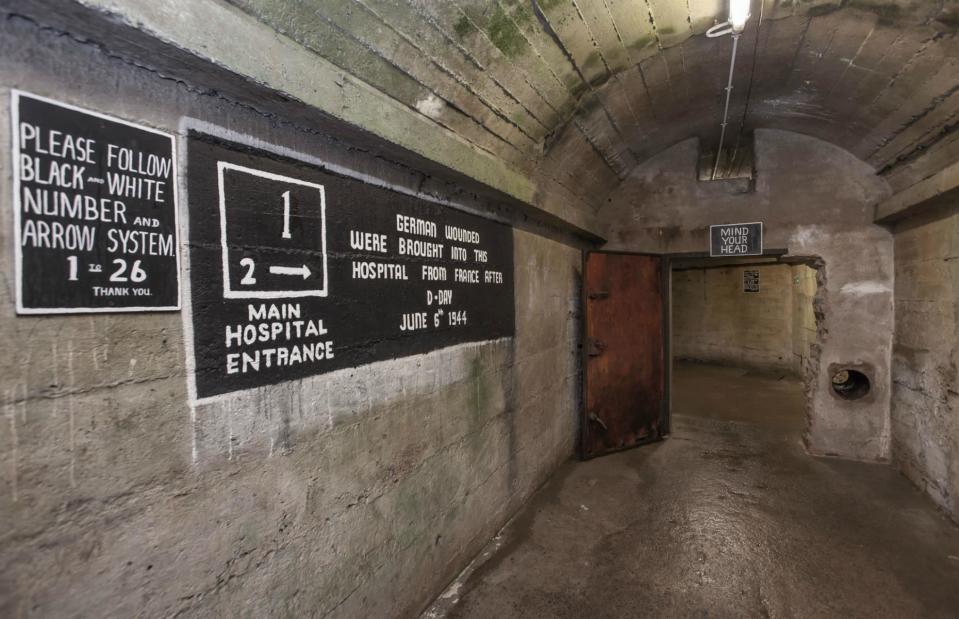
VisitGuernsey
Built by forced labour on the island of Guernsey during the Second World War, this grim military hospital doubled as a munitions store for occupying German forces. All that can be seen above ground are the small entrances and ventilation shafts, but underground there is a 75,000-square-foot (6,968sqm) maze of tunnels. The eerie complex, which gives visitors a vivid and unnerving walk back in time to the island's occupation, is open for tours during selective months throughout the year.
Quincy Mine, Hancock, Michigan, USA
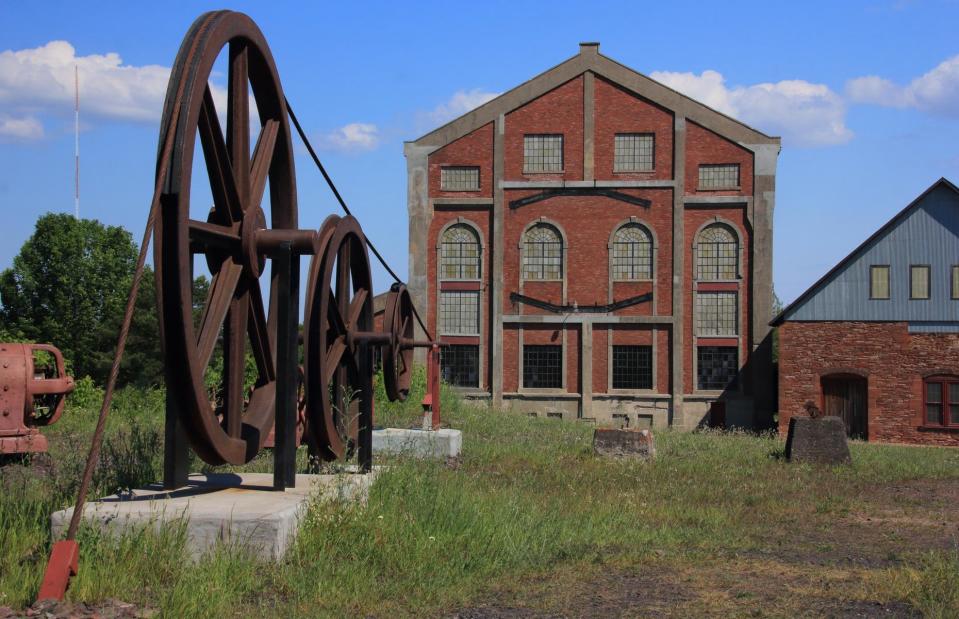
Geist Arts/Shutterstock
Protected by the Quincy Mine Hoist Association, this Michigan mine ceased operations around 1945. The association now gives curious visitors rare access to the deserted buildings on the site in Hancock, from a tour of the underground copper mine to a close-up look at the shaft house. There's also a little on-site museum that shines a spotlight on the region's mining history.
Kongsberg Silver Mines, Kongsberg, Norway
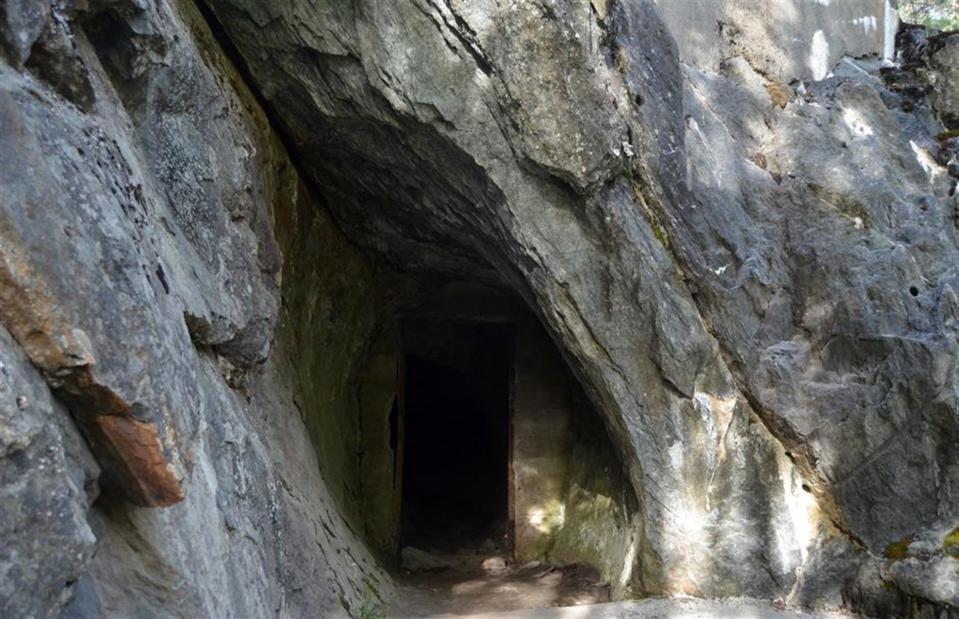
Sergey Kamshylin/Shutterstock
Norway’s long-running silver mining history is still encapsulated deep into the Kongsberg Silver Mines, which were founded in 1623 and closed down in 1958. Just near Oslo, a 1.4-mile (2.2km) trip on a train leads into a tunnel carved into the mountain down the King's Mine, the largest of Kongsberg's silver mines. Guided tours run on select days throughout the year (check website for details) and focus on the intricacies of the extraction of silver and the Fahrkunst, an ingenious lift which carried miners down to work the mine.
City Hall subway station, New York City, New York, USA
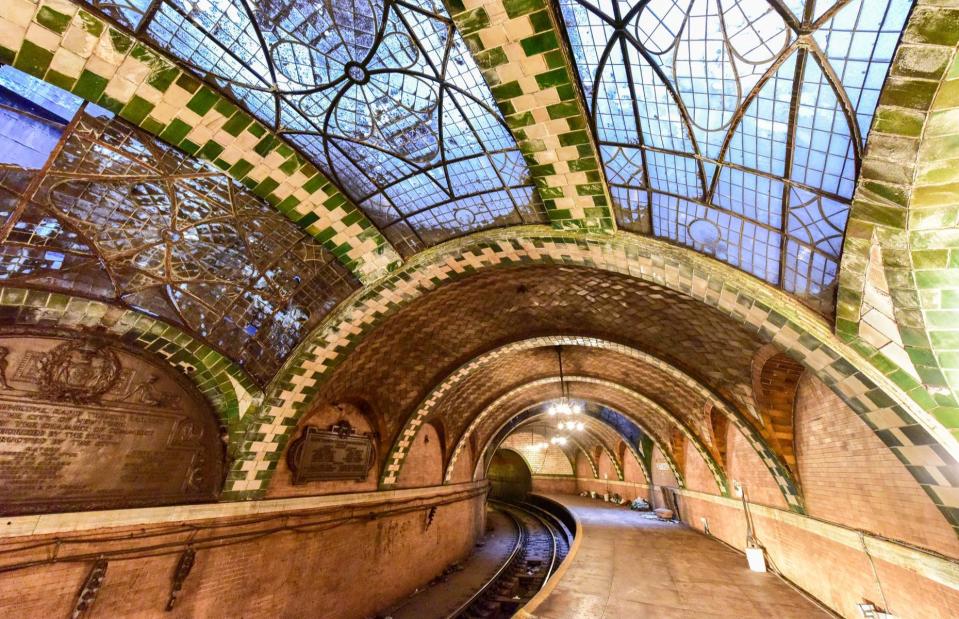
FelixLipov/Shutterstock
With its leaded skylights, vaulted tile ceiling and chandeliers, New York City's abandoned City Hall subway station makes you wonder why other stations have to look so functional. City Hall opened in 1904 but closed in 1945 due to lack of traffic. Today, the New York Transit Museum runs tours of the spectacular subterranean space for members, but you'll need to book well in advance to bag a space.
Daugavpils Fortress, Daugavpils, Latvia
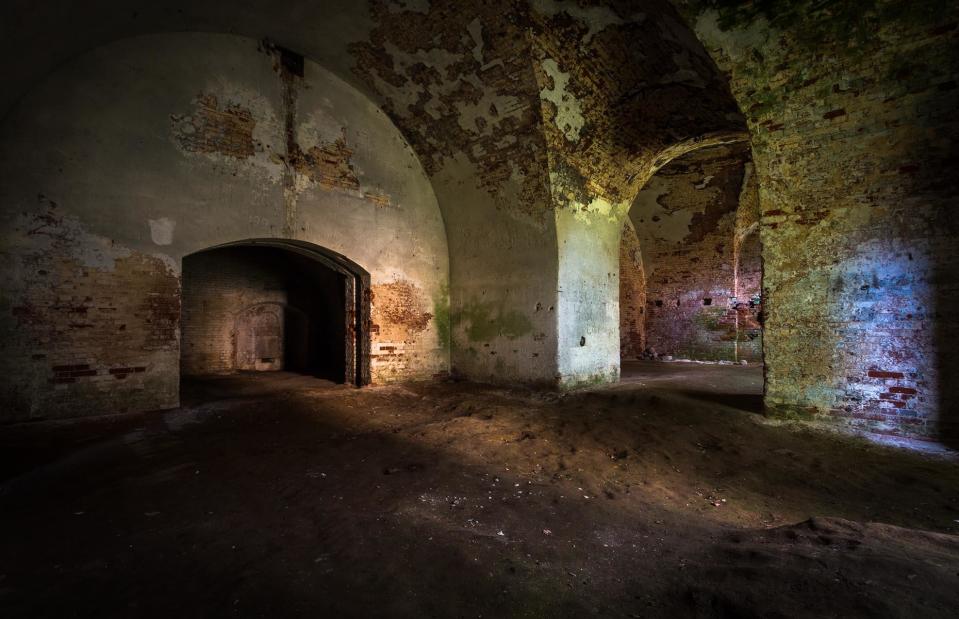
Eriks Z/Shutterstock
A large-scale fortress complex, Daugavpils Fortress was constructed in 1810 by the Russians in anticipation of an attack by Napoleon. It is the last bastion-style fortress ever constructed in Europe and is the only one that's been preserved without significant alterations. Today, the rambling structure is open for tourists, who can clamber down to its dank and spooky cellars and subterranean passages. What was once the arsenal building is now Daugavpils Mark Rothko Art Centre.
Bastion tunnels, Tallinn, Estonia
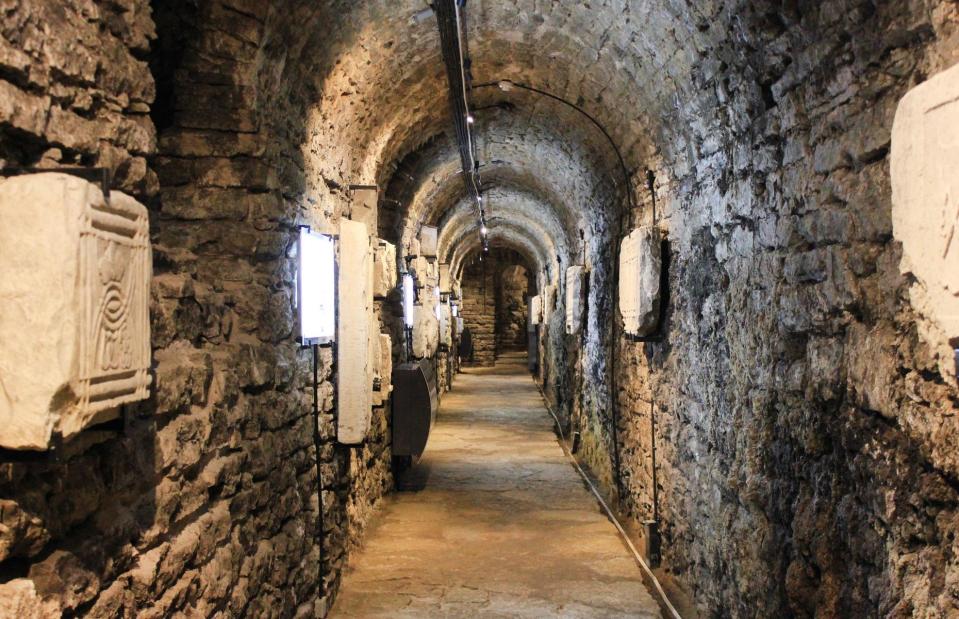
onajourney/Shutterstock
As you'd expect with any self-respecting fortified town, Tallinn has a tangle of mysterious passageways lurking beneath its streets. Built as part of its defence system, some have only recently been discovered while others such as the Bastion passageways, which date back to the 17th century, were repurposed as bomb shelters during the Second World War. The Soviets later installed electricity, running water, ventilation and a phone connection. Daily tours include old equipment left still in situ and stretches that haven’t changed since the Middle Ages.
The Government Bunker, Bonn, Germany
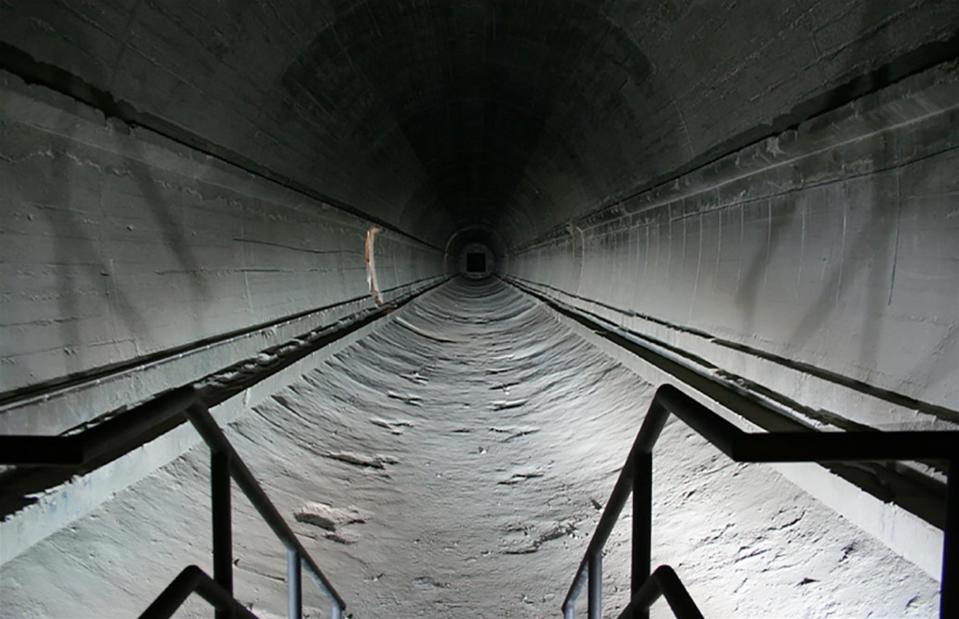
Tribaleye/Wikimedia/CC BY 3.0
This cavernous underground complex, built between 1960 and 1972 inside two railway tunnels, is located just near Germany's former capital, Bonn. It was created to shelter the West German government in the event of a nuclear winter or Soviet invasion. Most of the now redundant complex is derelict but you can visit certain areas, including a replica of the bedroom where the German chancellor would have bedded down, on a guided tour.
Nottingham caves, Nottingham, UK
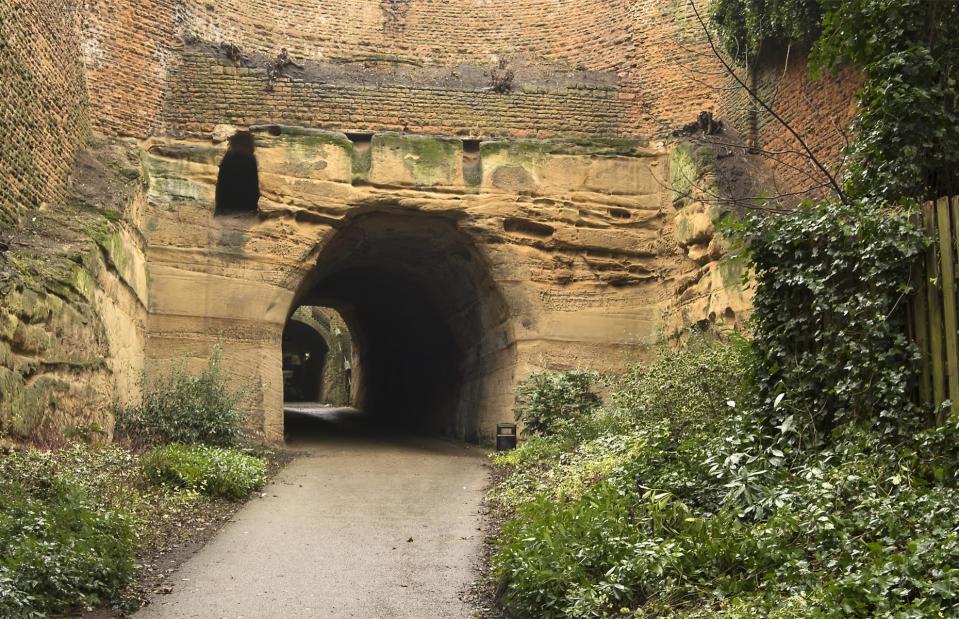
Simon Annable/Shutterstock
Did you know there's a maze of more than 500 sandstone caves underneath the streets of England's historic Nottingham that date back to the Dark Ages? These amazing secret underground spaces include a medieval tannery, an air raid shelter where thousands of people sought refuge during the Second World War and the remnants of Drury Hill Victorian slums. The caves are open for visitors and audio guide tours are also available.
Halliggye Fogou, Cornwall, UK
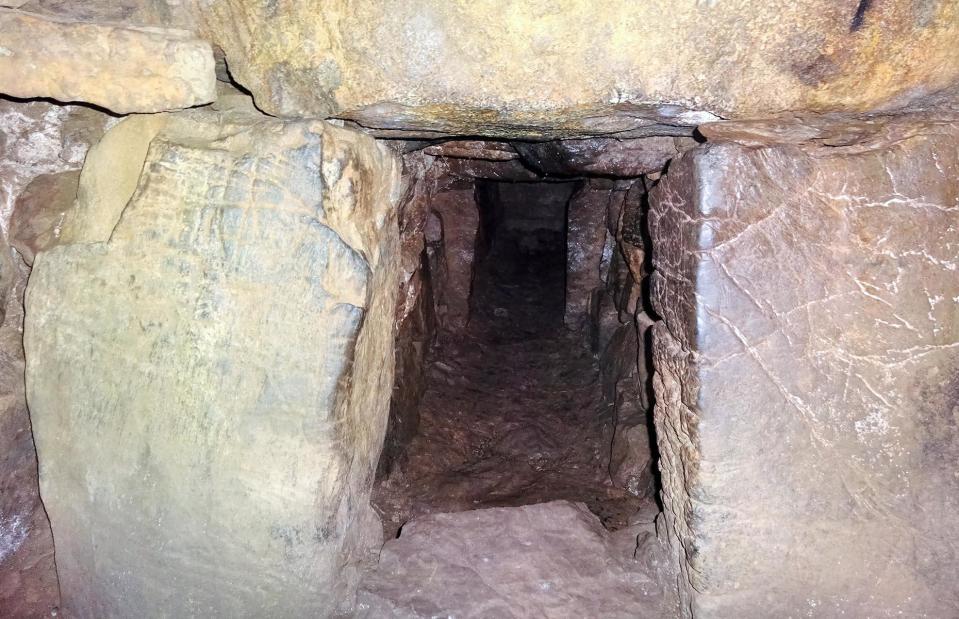
Roger Driscoll/Shutterstock
A remarkable underground maze of Iron Age stone-lined passages, known as fogous after the Cornish word ogo, which means cave, have been unearthed in Cornwall. The largest of which, Halliggye Fogou, is thought to date from the 5th or 4th century BC. The intriguing tunnels may have been places of refuge, storage chambers or ritual shrines. But no one knows for sure, which only adds to their appeal. The caves are open during daylight hours from May until September.
Seattle Underground City, Seattle, Washington, USA
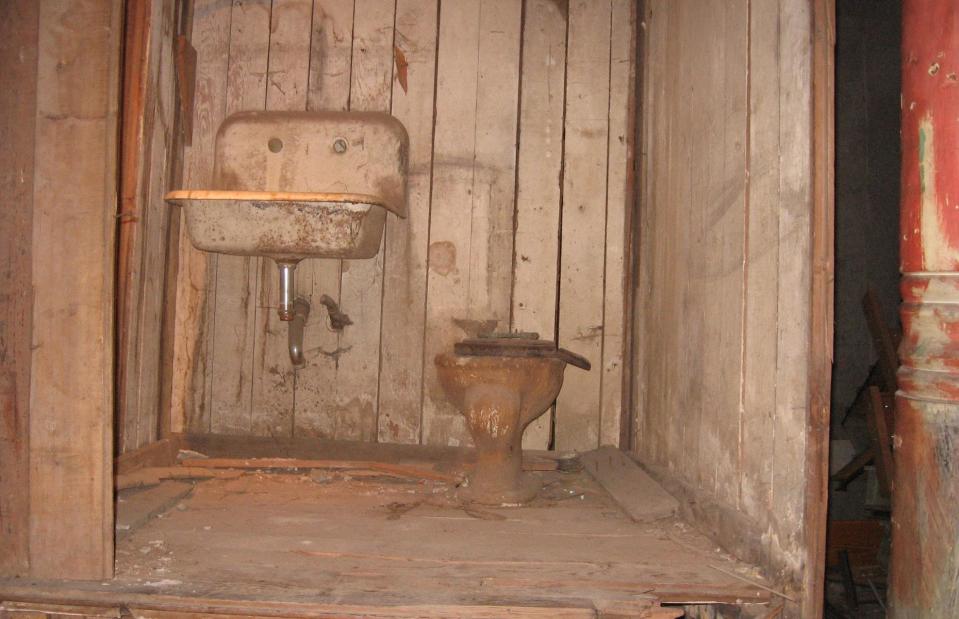
ChristianHeiling/Shutterstock
When a fire razed Seattle to the ground in 1889, the city was rebuilt one storey higher, to lift it out of the boggy land. Roads were filled in and raised, and buildings reconstructed so their ground floors became basements. New pavements then bridged the gap between the raised roads and first floor entrances, leaving tunnels below. Today, these subterranean passageways, taking in shop facades, bank vaults and even a toilet, can be seen on a guided tour.
Naval Museum Balaklava, Balaklava, Crimea
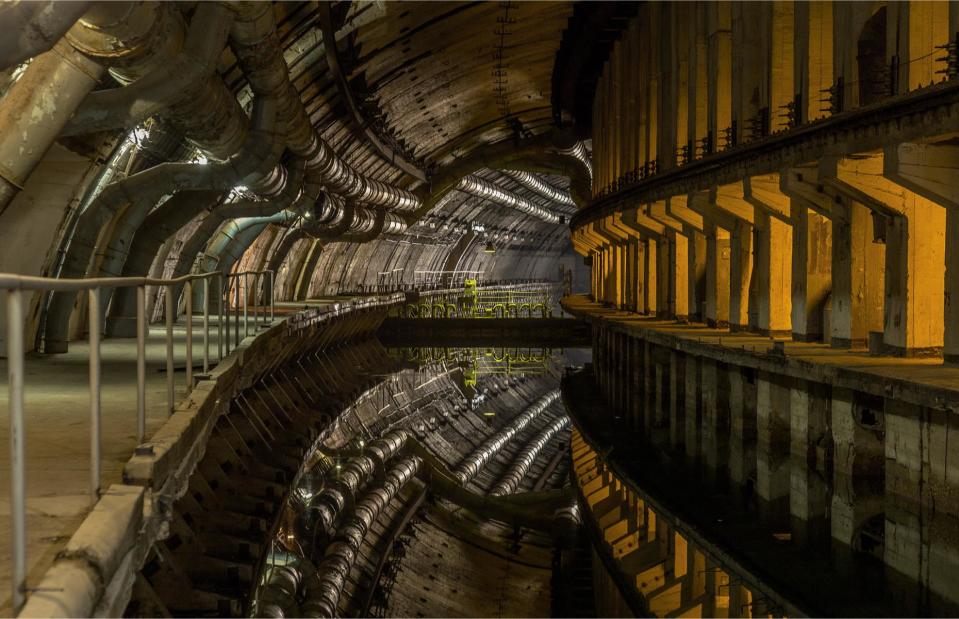
A_Lesik/Shutterstock
This former top-secret USSR submarine base, set strategically on the southwestern tip of the Crimean Peninsula in Balaklava Bay, was built to survive a US nuclear strike. The vast underground facility, which includes a network of water channels and warehouses to hide vessels and weapons, lies beneath Mount Tavros. After being abandoned from the early 1990s for nearly a decade, it fell into a state of disrepair but the Cold War relic is now open for tours and houses a museum.
Great Siege Tunnels, Gibraltar
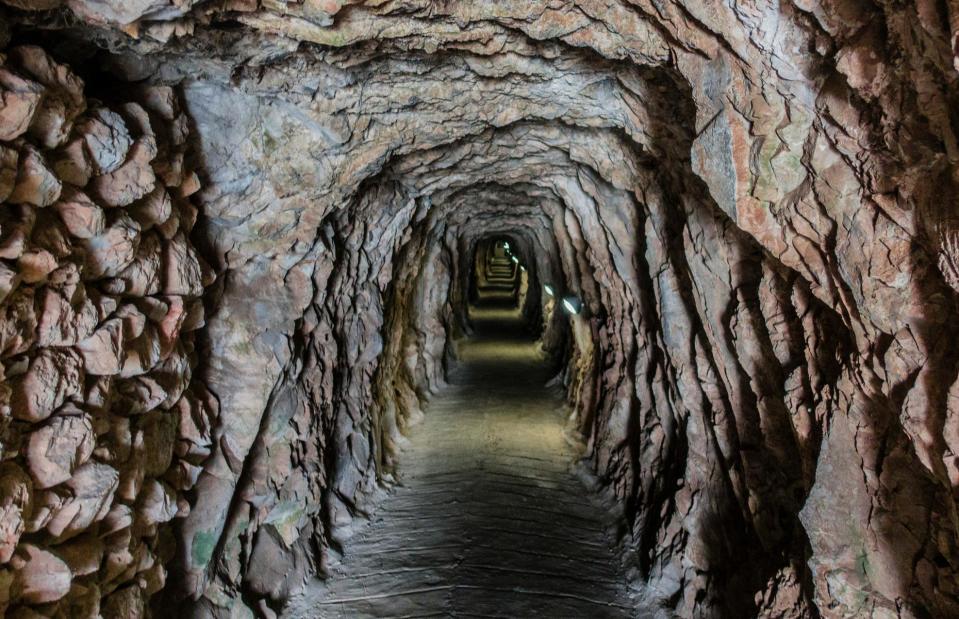
Mitchell Eglon/Shutterstock
This warren of man-made underground passageways can be found in the British Overseas Territory of Gibraltar, hidden inside the Rock of Gibraltar. The labyrinth is known as the Galleries or the Great Siege Tunnels, after its original use as a defence system during the Great Siege of Gibraltar between 1779 and 1783. The network was extended during the Second World War and today, the well-preserved tunnels are open to visitors.
Butte underground city, Montana, USA
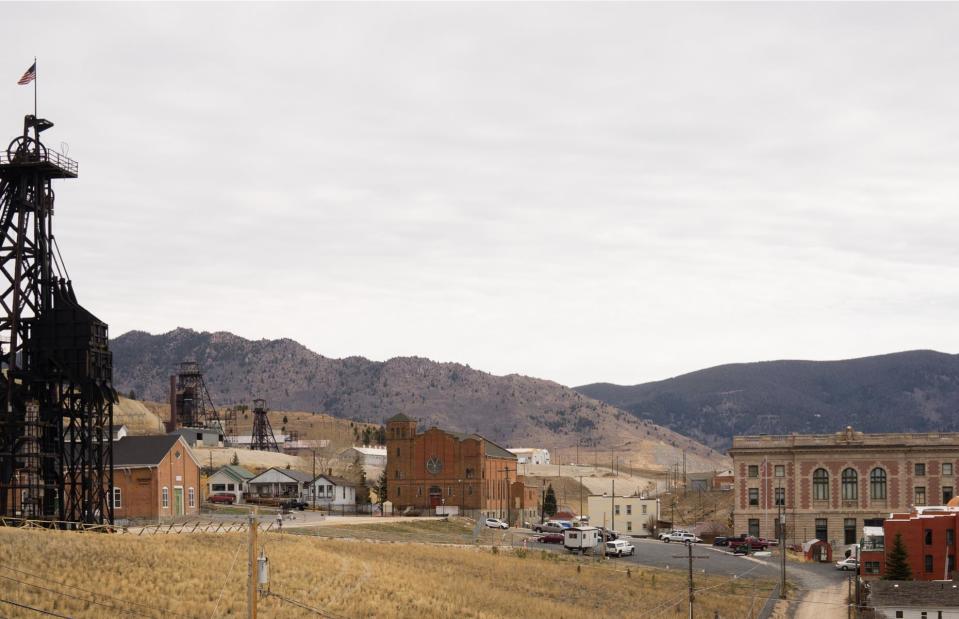
Christopher Boswell/Shutterstock
Hiding beneath Butte is a deserted secret world, including a barber, shoe shops, a prison and the Rookwood Speakeasy – a hidden bar from Prohibition days. These well-preserved relics are from the early 20th century when mining was at its height. The population swelled to around 100,000 and space was at a premium so people started using underground areas connected by tunnels. Today, the underground city can be visited on a subterranean tour.
Erdstall tunnels, Europe
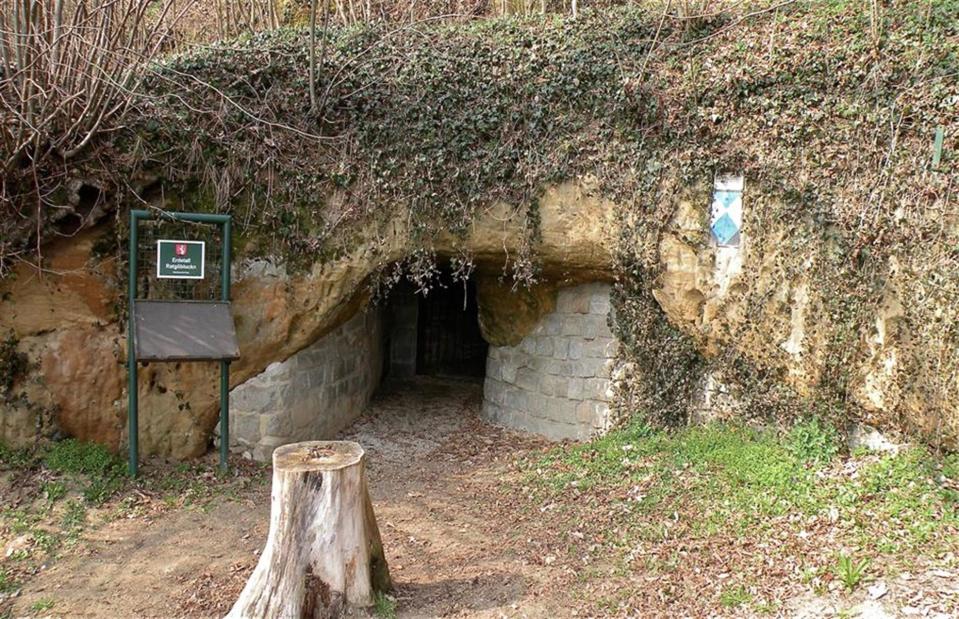
Pfeifferfranz/Wikicommons/ CC BY-SA 3.0
Mysterious and ancient man-made tunnels known as erdstall (meaning earth stable) are found around parts of Europe, particularly in Bavaria, Germany and Austria. While it’s not known for certain exactly when or why the series of narrow carved tunnels were created, some archaeologists think they were built for storage or as hiding places. It's possible to clamber inside some of the claustrophobia-inducing chambers, should you wish.
The Ruien, Belgium
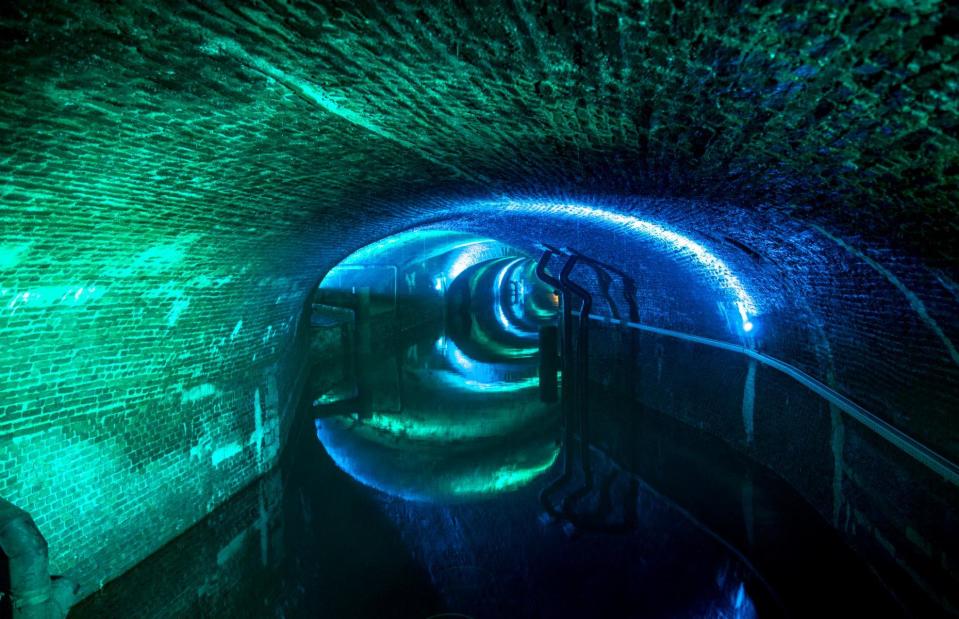
Gianni Aerts/De Ruien
Above ground, Antwerp is a fascinating mix of medieval history and contemporary cool. This unusual tour beneath its streets explores the network of former sewers, vaults and canals in semi-darkness, while revealing the secrets of Belgium’s second city through the ages. Be prepared for bad smells and dark tales.
Ajanta Caves, Maharashtra, India
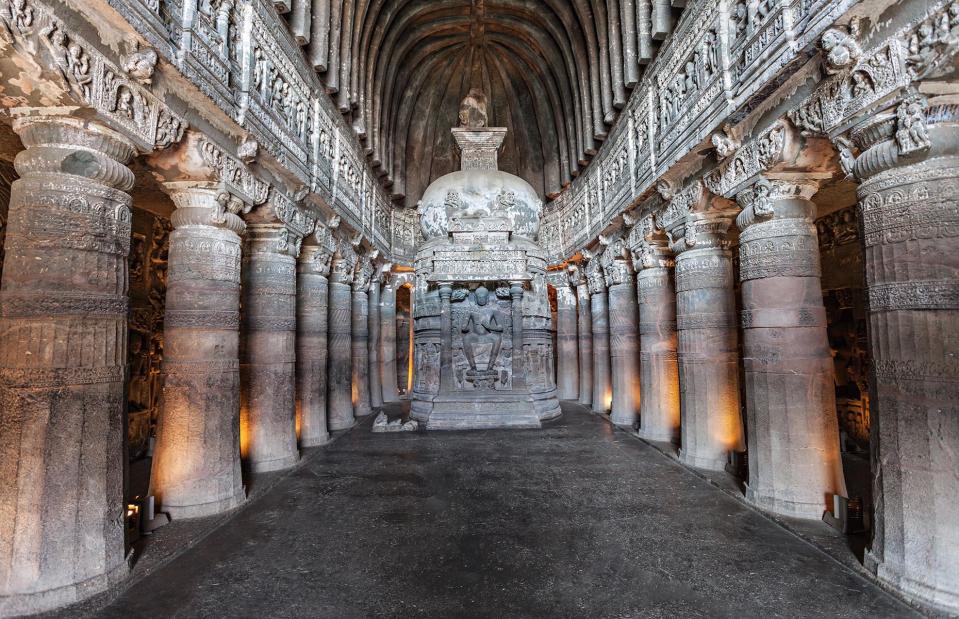
saiko3p/Shutterstock
A cliff face in Maharashtra hides remarkably well-preserved murals, carvings and sculptures dating from the 1st or 2nd century to the 5th century, which are considered masterpieces of Buddhist religious art. Undisturbed until a hunting party stumbled across an entrance in 1819, the 30 or so caves were used as a retreat by monks during the monsoon and house a network of halls, with columns carved out of the rock.


